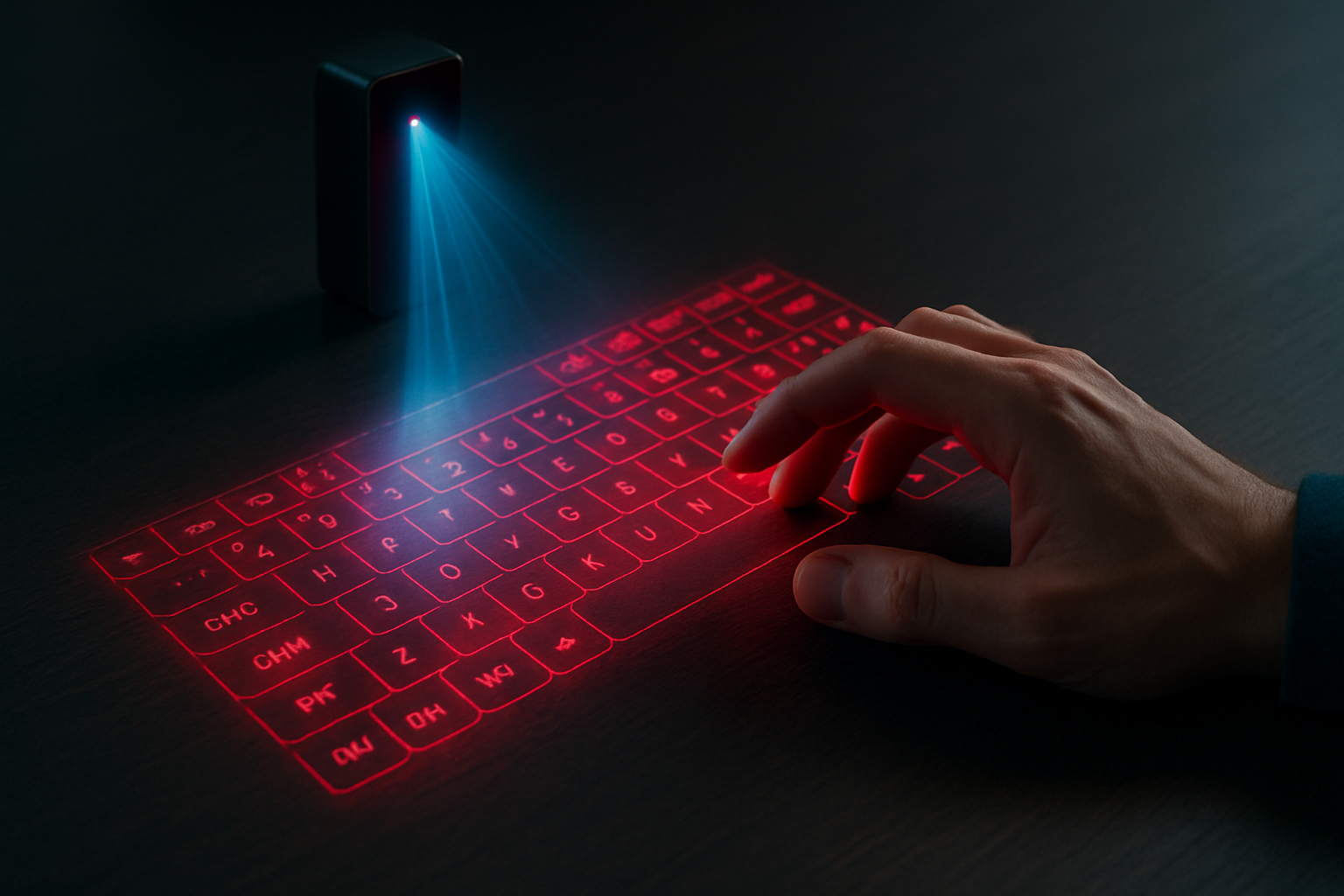Holographic Keyboards: A Glimpse into the Future of Typing
In a world where technology continually pushes the boundaries of what's possible, holographic keyboards are emerging as a fascinating frontier in human-computer interaction. These futuristic input devices project a virtual keyboard onto any flat surface, allowing users to type without physical keys. As we delve into this cutting-edge technology, we'll explore its potential to revolutionize how we interact with our devices and the challenges it faces in becoming a mainstream input method.

How Holographic Keyboards Work
At the heart of holographic keyboard technology lies a clever combination of optics and sensors. A small projector emits a visible image of a keyboard onto any flat surface. Simultaneously, an infrared plane of light is projected just above the surface. When a user’s fingers break this plane, cameras or sensors detect the interruption and interpret it as a keystroke. Sophisticated algorithms then translate these movements into digital input, allowing for seamless typing without physical keys.
The Promise of Portability
One of the most compelling aspects of holographic keyboards is their potential for extreme portability. Traditional keyboards, even foldable ones, still occupy physical space and add weight to mobile setups. Holographic keyboards, however, can be integrated into small devices like smartphones or compact projectors, effectively turning any surface into a full-sized keyboard. This capability could be a game-changer for mobile professionals, travelers, and anyone seeking to minimize their gadget footprint.
Challenges and Limitations
Despite their futuristic appeal, holographic keyboards face several hurdles in achieving widespread adoption. The lack of tactile feedback, a crucial aspect of typing for many users, remains a significant challenge. Without the physical sensation of pressing keys, users may find it difficult to type accurately or maintain speed. Additionally, the technology’s reliance on flat surfaces and specific lighting conditions can limit its usability in various environments.
Current Market and Future Prospects
While holographic keyboards have yet to become a common sight, several companies are actively developing and refining the technology. Products like the Celluon Epic and the Serafim Keybo have made their way to market, offering consumers a taste of this futuristic input method. These devices, typically priced between $100 and $200, target early adopters and tech enthusiasts. However, as the technology improves and production scales up, we could see more affordable options emerge.
Integrating with Emerging Technologies
The future of holographic keyboards may lie in their integration with other emerging technologies. Augmented reality (AR) headsets, for instance, could project keyboards directly into a user’s field of vision, eliminating the need for a flat surface altogether. This convergence of holographic input and AR could lead to entirely new ways of interacting with digital information, blurring the lines between physical and virtual interfaces.
Potential Applications Beyond Typing
While typing is the primary focus of current holographic keyboard technology, its potential extends far beyond text input. Musicians could use projected interfaces to control virtual instruments, designers could manipulate 3D models with gestures, and gamers could enjoy immersive, controller-free experiences. As the technology evolves, we may see holographic interfaces that adapt to different tasks and user preferences, offering unprecedented flexibility in human-computer interaction.
The Road to Mainstream Adoption
For holographic keyboards to transition from novelty to necessity, several key improvements are needed. Enhanced accuracy, reduced latency, and better performance in varied lighting conditions are crucial steps. Additionally, developing haptic feedback systems that can simulate the feel of physical keys could significantly boost user acceptance. As these challenges are addressed, we may see holographic keyboards gradually find their way into more consumer devices and professional settings.
In conclusion, holographic keyboards represent a tantalizing glimpse into the future of input technology. While they face significant hurdles in becoming a mainstream alternative to physical keyboards, their potential for portability and versatility makes them a technology worth watching. As researchers and companies continue to refine the technology, we may find ourselves typing on beams of light sooner than we think, ushering in a new era of human-computer interaction.





